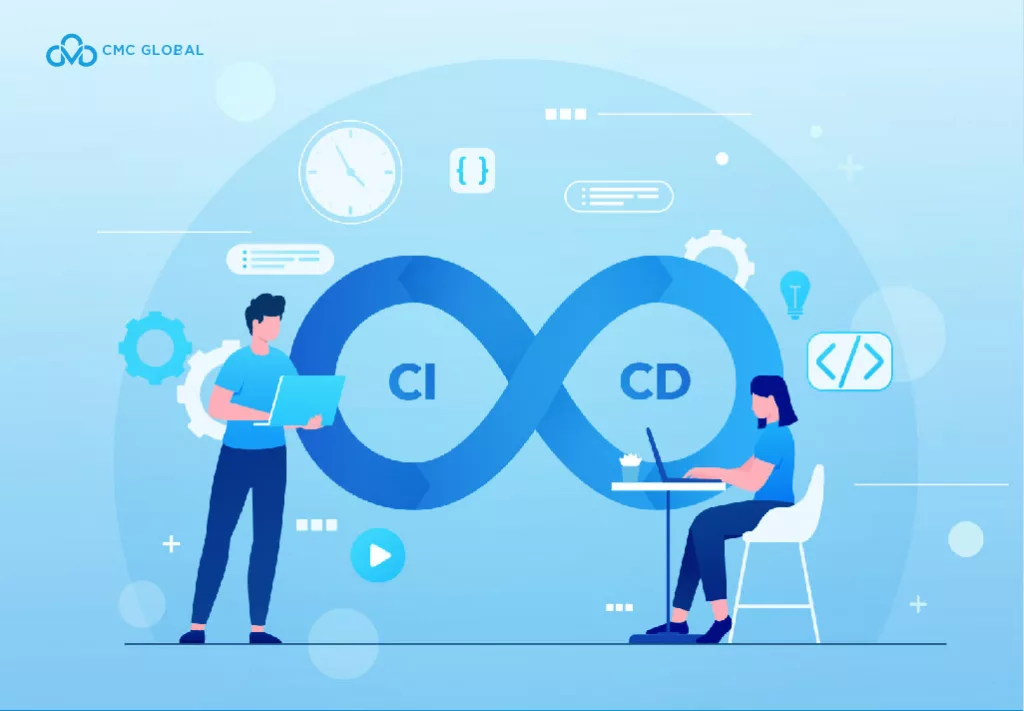Agile techniques are now the most widely used project management methodology in software development. Agile has taken the globe by storm since its inception in 2001, since it has been shown to help teams manage work more effectively while delivering the best quality product within a budget.
According to data from a 2018 survey, projects employing Agile approaches are 25% more effective, and nearly 71% of firms use Agile on a regular basis. In this article, we’ll share with you the many benefits that Agile can offer your business and how it compares with other software development models.
Why is Agile so popular?
“Agility is catching fire,” according to management consulting company McKinsey & Company, as companies see the importance of the Agile methodology in this new era of work. The 21st century’s fast technology improvements have dominated the entire working scene, affecting every industry.
The benefits of an Agile solution were initially discovered by software development teams, who used it to accelerate projects and shorten the time between product launches. More and more companies are now turning to Agile to speed up their operations and stay up with the fast-paced future of work. According to a recent poll of experts in 19 countries conducted by Organize Agile, approximately half of all firms have been adopting the Agile methodology for three years or more.
To fully grasp the rising popularity of Agile project management, let’s take a deeper dive into its key benefits
11 Benefits of Agile Development
Consider the following benefits of Agile techniques if your company or development team is contemplating implementing Agile project management tools and practices for their business but can’t seem to make a decision.
Superior Product Quality
The Agile approach contributes to consistent quality by integrating testing throughout the development life cycle. It is seen as an essential aspect of the process following each sprint. As a result, it is easier to identify problems and develop remedies in a timely and effective manner.
As an extra benefit, Agile allows for the participation of the customer at every stage of the development process, allowing them to make changes based on market circumstances. In such an environment, the dev team can also detect and resolve errors more quickly, with no impact on the final result. In short, Agile enables teams to continually develop the product until it fulfills the demands of the target audience.
Customer Satisfaction
One of the most important advantages of the Agile approach is that it gives an excellent client experience. Product owners are involved at every stage of the project, which leads to increased customer retention.
Clients have the flexibility to make changes during the process, allowing the final result to fit their specifications. Improved customer satisfaction with the end product is a guarantee with such an approach to development, so much so that most Agile users go back to it for future projects.
Reduced Risk
Every endeavor involves the possibility of mistakes and failures. Fortunately, every project carried out adopting an Agile methodology will benefit from a lower chance of errors thanks to constant reviews.
Regular communication between the customer and the team helps to keep everyone on the same page about where the project is headed. This also enables the detection and correction of problems early on, saving time, money, and frustration.
Product Predictability
Agile enables risk prediction and the development of effective risk mitigation procedures. In other words, a team can easily detect and foresee risks while also making enough strategies to mitigate them so that the project proceeds smoothly.
Scrum methodology is a great example of a methodology that enables product predictability. It employs sprint backlogs and burn-down charts to boost project visibility. Managers will then be able to forecast performance and plan appropriately.
Better Productivity
Development teams in sprints work on agile projects. This allows the team to plan its workflow, deal with unforeseen changes, and bring in new team members to solve specific problems or tasks.
When work is split down into iterations, there is always a milestone and a deadline, which ensures projects are completed in shorter sprints. Furthermore, items are released more quickly, although the opportunity to make modifications at any point during the process remains a realistic option.

Improved Team Morale and Collaboration
Agile empowers team members, allowing them to make decisions. This fosters a shared feeling of ownership and goals for the team, which can assist and inspire people to complete tasks more quickly.
Purposeful teams take ownership of tasks and work together to attain specific goals. When team members are driven to work efficiently, they accomplish more and set a quicker pace for themselves.
Enforced Communication
When working on a project, agile teams often prioritize face-to-face communication and frequent engagement. These teams often meet on a daily basis to ensure that everyone is on the same page.
Agile development teams also often meet in order to overcome bottlenecks and fulfill deadlines. Improved communication helps team members bond, which produces a favorable environment. Frequent communication clears up uncertainty and removes any ambiguity that might jeopardize the project’s success.
Predictable Costs
Agile development is a cost-effective strategy. Developers can better forecast costs based on development sprints. Clients benefit by simply paying for what they require rather than overpaying for high levels of uncertainty.
Faster Time-to-Market
Agile methodologies enable teams to work swiftly in order to develop MVPs on schedule. Because each team creates the product progressively, using Agile techniques results in short periods that produce the right item at the right time. This allows the customer to capitalize on opportunities quickly, giving them a first-mover advantage in the market and keeping them ahead of the competition.
Transparency
Because every project must have a clear description from the start, Agile techniques foster transparency. All teams are aware of the project’s details and are aware of their respective duties. To ensure a smoother delivery, any predicted issues must be addressed immediately before proceeding to the next step. From idea until deployment, both the team and the customer may monitor and assess the process to ensure that it is in accordance with the requirements.
Encouraged Adaptability
Companies are more likely to achieve success if their personnel are able to adjust to changes quickly. Agile approaches encourage adaptability, so adjustments don’t take as long or cost as much. In the long term, team members will be able to become more creative and learn how to produce solutions in a rapidly changing world.
The advantages listed above are only a few of the numerous reasons why you should adopt Agile techniques for your projects. Agile is primarily concerned with being responsive to the market and the customer by responding quickly to input while remaining actively involved in the project. It’s also about getting everyone on the same page and not being scared to make adjustments when and where they’re necessary.
Agile vs. Other Development Models
The Agile approach is often regarded as the superior option when compared to opposing project development methodologies. Let’s have a look at some examples:
Agile vs. Waterfall
The waterfall is likely the most well-known conventional project management approach. It follows an organized, linear procedure in which each activity must be accomplished before proceeding to the next. While this technique would be ideal for a long-term project (such as construction), it would not work in a fast-paced software development environment where clients frequently change their minds and demand flexible deliverables.
Take, for example, the US media conglomerate NPR. The organization switched from Waterfall to Agile to prevent “unwanted outcomes,” such as a situation in which the end goals deviated significantly from what was defined at the start of the project. Because they weren’t even clear on what project they intended to develop, the Waterfall process of developing a completely defined plan was out of the question. This is why they chose Agile to allow for greater flexibility in their approach.
Agile vs. Lean
The Lean technique employs a simplified approach with the goal of eliminating waste. Agile and Lean have many commonalities, including an emphasis on customer satisfaction and rapid delivery. However, it’s arguable that Agile has a structural advantage.
Agile is significantly more flexible than conventional equivalents, as it provides structured organization, as seen by clearly defined responsibilities, frequent meetings, and systematic evaluations. The goal of lean is to eliminate waste. In virtually all of its principles, it emphasizes a minimalist approach to development. Agile, on the other hand, is strongly reliant on cross-collaboration. The Agile technique is based on collaboration between business partners, developers, end users, and pretty much anybody else involved.
Agile vs. PRINCE2
PRINCE2 (Projects In Controlled Environments) is a project management technique that emphasizes product-based planning. A structured project board is used for high-level tasks, while a project manager oversees day-to-day operations. PRINCE2 is beneficial for upper management, but it lacks Agile’s emphasis on delivery.
Agile does not use a predictive, plan-based methodology like PRINCE2. Agile teams, on the other hand, focus on delivering a working prototype to clients at the conclusion of each sprint and using feedback to shape their development process. Agile is significantly more adaptive to consumer requirements as a result of its sprint-based strategy.
Final words
Agile is a great technique for software development that benefits not only the development team but also the client in various ways. Agile enables project teams to deal with several of the most frequent project issues (such as cost, schedule predictability, and scope creep) more effectively. Agile achieves the same goals by rearranging and reimagining the activities involved in bespoke software development in a leaner and more business-focused manner.
If your company doesn’t have the expertise to execute your software development project in-house, it’s best to find a service provider to help you.
CMC Global is among the top three IT outsourcing services providers in Vietnam. We operate a large certified team of developers, providing a wide variety of stacks to help you build your web application in the most cost-effective way and in the least amount of time.
For further information, fill out the form below, and our technical team will get in touch shortly to advise!




